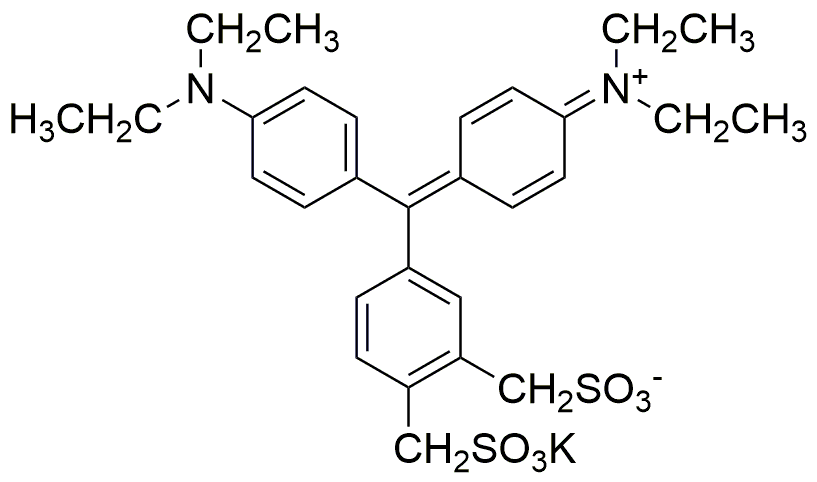Acid green A is widely utilized in research focused on:
- Dyeing and Textile Industry: This chemical is commonly used as a dye for textiles, providing vibrant colors that are both stable and long-lasting. Its application in fabric dyeing helps manufacturers meet consumer demands for high-quality, colorful products.
- Biological Staining: In laboratory settings, Acid green A is employed as a biological stain. It assists researchers in visualizing cellular structures under a microscope, making it invaluable in histology and cytology studies.
- Food Industry: As a food coloring agent, it enhances the visual appeal of various food products. Its use in the food industry is regulated, ensuring safety while providing an attractive appearance to items like candies and beverages.
- Cosmetics: This compound is also found in cosmetic formulations, where it serves as a colorant. Its stability and vibrant hue make it a popular choice for products like shampoos and lotions, appealing to consumers looking for visually appealing items.
- Environmental Monitoring: Acid green A can be used as a tracer in environmental studies to monitor water quality and pollution levels. Its distinct color allows for easy detection in various water bodies, aiding researchers in assessing ecological impacts.
General Information
Properties
Safety and Regulations
Applications
Acid green A is widely utilized in research focused on:
- Dyeing and Textile Industry: This chemical is commonly used as a dye for textiles, providing vibrant colors that are both stable and long-lasting. Its application in fabric dyeing helps manufacturers meet consumer demands for high-quality, colorful products.
- Biological Staining: In laboratory settings, Acid green A is employed as a biological stain. It assists researchers in visualizing cellular structures under a microscope, making it invaluable in histology and cytology studies.
- Food Industry: As a food coloring agent, it enhances the visual appeal of various food products. Its use in the food industry is regulated, ensuring safety while providing an attractive appearance to items like candies and beverages.
- Cosmetics: This compound is also found in cosmetic formulations, where it serves as a colorant. Its stability and vibrant hue make it a popular choice for products like shampoos and lotions, appealing to consumers looking for visually appealing items.
- Environmental Monitoring: Acid green A can be used as a tracer in environmental studies to monitor water quality and pollution levels. Its distinct color allows for easy detection in various water bodies, aiding researchers in assessing ecological impacts.
Documents
Safety Data Sheets (SDS)
The SDS provides comprehensive safety information on handling, storage, and disposal of the product.
Product Specification (PS)
The PS provides a comprehensive breakdown of the product’s properties, including chemical composition, physical state, purity, and storage requirements. It also details acceptable quality ranges and the product's intended applications.
Certificates of Analysis (COA)
Search for Certificates of Analysis (COA) by entering the products Lot Number. Lot and Batch Numbers can be found on a product’s label following the words ‘Lot’ or ‘Batch’.
*Catalog Number
*Lot Number
Certificates Of Origin (COO)
This COO confirms the country where the product was manufactured, and also details the materials and components used in it and whether it is derived from natural, synthetic, or other specific sources. This certificate may be required for customs, trade, and regulatory compliance.
*Catalog Number
*Lot Number
Safety Data Sheets (SDS)
The SDS provides comprehensive safety information on handling, storage, and disposal of the product.
DownloadProduct Specification (PS)
The PS provides a comprehensive breakdown of the product’s properties, including chemical composition, physical state, purity, and storage requirements. It also details acceptable quality ranges and the product's intended applications.
DownloadCertificates of Analysis (COA)
Search for Certificates of Analysis (COA) by entering the products Lot Number. Lot and Batch Numbers can be found on a product’s label following the words ‘Lot’ or ‘Batch’.
*Catalog Number
*Lot Number
Certificates Of Origin (COO)
This COO confirms the country where the product was manufactured, and also details the materials and components used in it and whether it is derived from natural, synthetic, or other specific sources. This certificate may be required for customs, trade, and regulatory compliance.


